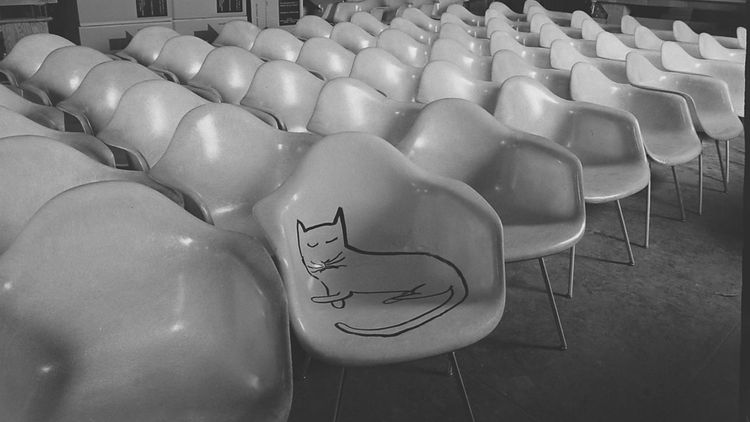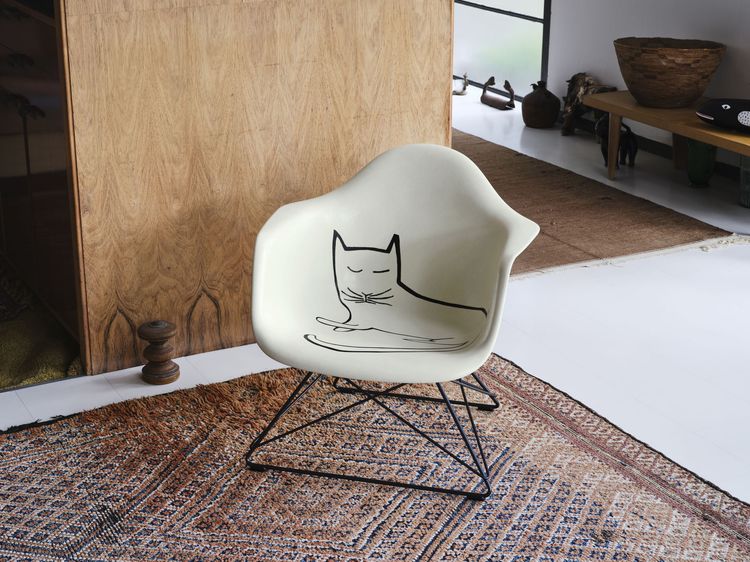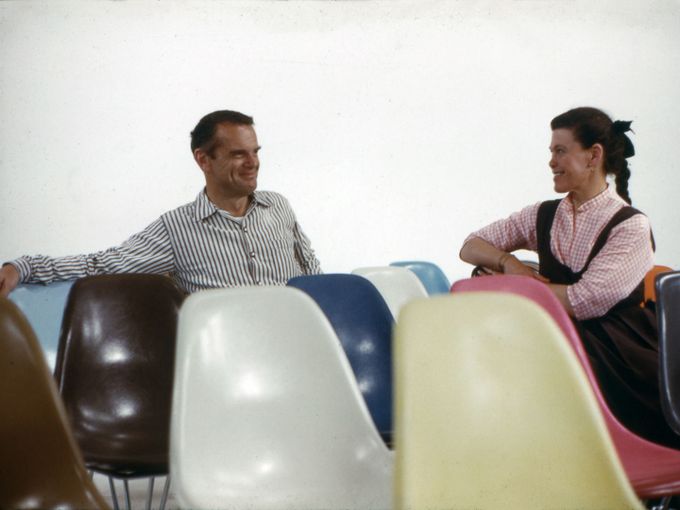ProduitsChaisesFauteuilsCanapésSièges de bureauChaises longuesTabourets et bancsSculpturesSièges conférenceSièges pour aéroportsRangementMicro architectureTables de salle à mangerTables de caféTables basses et tables d’appointBureauxSystèmes de mobilier de bureauSystèmes de conférenceLumièresHorlogesObjets décoratifsPorte-manteaux et étagères muralesPlateaux et vaissellesNouveauBest-sellerRapidement disponibleCouleurs & matériauxAlexander Girard Antonio CitterioBarber OsgerbyCharles & Ray Eames George NelsonHella JongeriusIsamu NoguchiLounge chair finderOffice chair finderGift finderEntretien & réparationPièces de rechangeProduits d'entretienGarantie du fabricantVitra Circle StoresLounge Chair & OttomanHang it allInspirationsSéjourSalle à mangerHome OfficeChambre d'enfantsExtérieurHome StoriesAugmented RealityCouleurs & matériauxHome SelectionEspace de travailConcentrationRéunionAteliersClub OfficeCitizen OfficeStudio OfficeDynamic SpacesEspace de réceptionAéroportsÉducationCo-WorkingHealthcareNos clientsDestination WorkplaceÀ l’heure des classiquesChaises de bureauDancing OfficeHome StoriesHome Selection : tisus de Kvadrat et DedarAugmented Reality - faites entrer les produits Vitra dans votre maisonL'École de design : Valoriser le travail et les connaissancesÀ l’heure des classiquesCouleurs & matériauxUne maison accueillante Un paysage de bureaux - sans murs ni cloisonsConfort et durabilité réunisUn espace de premier plan pour une grande école d'artServicesEntretien & réparationPièces de rechangeProduits d'entretienGarantie du fabricantFAQ et contactGuides d'utilisationConsulting & Planning StudioVitra Circle StoresConseils & planification dans la VitraHausGuides d'utilisationInstructions d'entretien pour l'extérieurRéparation, entretien, remise en état au Vitra Circle Store Campus ProfessionalsDonnées CAOFiches produitsCertificatsRapport sur le développement durableGuides d'utilisationInformations écologiquespConExemples de planificationCouleurs et matériauxCertificats et normesHome SelectionLogin revendeurNos clientsMyntDestination Workplace: Rendez visite à nos clients et partenairesAnagram SofaMikadoTyde 2 sur roulettesACXDancing OfficeSièges de bureauMagazineHistoiresEntretiensExpositionsDesignersLe Projet VitraA Capsule in TimeSeeing the forest for the treesRefining a classicMynt is a lifetime achievement to meA desk like a typefaceV-FoamSculptural IconsGames bring people together – just like good officesLet there be light!Social SeatingJust Do It!EVER GREENWhy the Eames La Fonda Chair was designedWhen a Sofa is more than just a Sofa: Anagram100% virgin wool – 100% recyclableAn archive is like a time capsuleVitraHaus Loft - A conversation with Sabine MarcelisA 1000 m2 piece of furnitureFrom a toy to an objectThe Eames Collection at the Vitra Design MuseumAbout the partnership between Eames and VitraVitra CampusExpositionsVisites guidées et ateliersRestaurationShoppingActivités en familleArchitectureVotre événementConseils & planification dans la VitraHausPlanifier votre visiteVitra Campus appCampus EventsActualitésVitraHausVitra Design MuseumVitra SchaudepotVitra Circle Store CampusOudolf GartenSur VitraDurabilitéJobs & CareersProcessus de designL’original est signé VitraHistoire - Project Vitra
The Chair with the Cat
The story about the Eames Fiberglass Armchair with Steinberg Cat

Saul Steinberg (1914–99), the Romanian émigré and artist, rose to fame in the 1940s through his ability to convey sharp, poignant observations in spare renderings. While still overseas at the outset of the decade, a contact from his days as an architecture student in Milan helped to get him illustration jobs from a variety of New York-based publications, and after his arrival stateside, these connections led to a commission in the US Naval Reserve and also citizenship.
Towards the end of the 1940s, thanks largely to his New Yorker drawings, Steinberg was widely known and had become a fixture of New York’s intellectual and artistic circles. His services were wildly in demand, and seemingly no subject matter was off-limits.
Towards the end of the 1940s, thanks largely to his New Yorker drawings, Steinberg was widely known and had become a fixture of New York’s intellectual and artistic circles. His services were wildly in demand, and seemingly no subject matter was off-limits.

In parallel, Charles and Ray Eames also rose to fame and admiration in that same decade. The impact of their plywood chairs had been huge. Not only were they unlike anything that had been seen before – light, strong and elegant – but they also achieved immediate commercial success. The epochal design was soon followed by another innovative triumph from the Eameses: the Eames Fiberglass Chair. Launched in 1950, the Eames Fiberglass Chair was the world’s first industrially mass-produced chair with the seat and backrest formed from a one-piece composite shell. The design turned out to be a ground-breaking innovation, with a direct lineage to the way chairs are conceived today.
Just as the Eames Fiberglass Chairs were introduced to the market, Steinberg spent two months in Los Angeles with his wife, the artist Hedda Sterne. Shortly after their arrival, the Eameses befriended the couple. As was often the case for Charles and Ray, the lines between life and work quickly blurred. At the Eames House the couples projected Steinberg’s drawings of women onto Ray and Hedda and then photographed the otherworldly results. Eucalyptus leaves were collected from the meadow to be transformed into birds. Together, they envisioned movies about drawings and Los Angeles. Having noted that Charles Eames never graduated from university or received his degree in architecture, Steinberg created a series of elaborate fake diplomas for his friend.
Just as the Eames Fiberglass Chairs were introduced to the market, Steinberg spent two months in Los Angeles with his wife, the artist Hedda Sterne. Shortly after their arrival, the Eameses befriended the couple. As was often the case for Charles and Ray, the lines between life and work quickly blurred. At the Eames House the couples projected Steinberg’s drawings of women onto Ray and Hedda and then photographed the otherworldly results. Eucalyptus leaves were collected from the meadow to be transformed into birds. Together, they envisioned movies about drawings and Los Angeles. Having noted that Charles Eames never graduated from university or received his degree in architecture, Steinberg created a series of elaborate fake diplomas for his friend.


While these ephemeral experiments were indicative of the relaxed and playful spirit permeating the proceedings, a visit by Steinberg to the Eames Office in Venice resulted in a series of iconic collaborative works that have withstood the test of time. During his stay, Steinberg spontaneously drew a number of lively figures on the furniture, floors and walls of the studio. Steinberg was particularly taken with the newly designed Fiberglass Chairs and drew flowing lines on a succession of seats. A small, imaginative cosmos of characters and animals took shape within the Eames Office premises, and Charles and Ray Eames and other Eames Office employees enthusiastically documented the spectacle with a series of photographs.


One of the drawn figures was a sleeping cat: Steinberg had it take a nap in one of the Fiberglass Armchair shells. Relaxed, with its eyes closed, it seems to have found the perfect spot to rest and remain united with the chair forever.
From this universe of expressive drawings, only two vintage specimens still exist today: the cat on the armchair shell and part of a nude figure, also on an armchair shell. The chair with the cat is part of the Eames Institute Collection; the chair with the nude figure is on permanent loan from the Eames Institute to the Vitra Design Museum.
From this universe of expressive drawings, only two vintage specimens still exist today: the cat on the armchair shell and part of a nude figure, also on an armchair shell. The chair with the cat is part of the Eames Institute Collection; the chair with the nude figure is on permanent loan from the Eames Institute to the Vitra Design Museum.

The cat is one of the most frequently recurring and significant subjects in Steinberg’s drawings, so much so that it appeared as the main character on seven covers of The New Yorker. Scenes from domestic life were a further focus of his illustrations, and it was this combination of two subjects so dear to him – chairs and cats – along with his drawings on three-dimensional objects and a more general reflection on the interconnections between reality and fiction that led to a collaboration with the Eameses.


Although Steinberg and Sterne departed Los Angeles in September of 1950, Eames chairs continued to appear in Steinberg’s drawings and the couples remained in contact. From time to time, Charles and Ray called on Steinberg to produce additional diplomas to give as commemorative gifts. While some of their collaborations live on in only photographs, the two surviving chairs – the cat and the nude – have been exhibited extensively through the years and are a testament to the timelessness of both Steinberg’s and the Eameses’ creative vision.
Limited Edition: Eames Fiberglass Armchair with Steinberg Cat


On 14 June, Vitra is launching a limited edition of the Eames Fiberglass Armchair with Steinberg Cat. This edition of 500 pieces reproduces a drawing that was done on an Eames Fiberglass Armchair shell by the Romanian-American artist Saul Steinberg in the 1950s. The Eames Fiberglass Armchair with Steinberg Cat is sold by Vitra in Europe only. For customers in North America and Japan, please visit hermanmiller.com. The Steinberg Cat drawing is used with permission of The Saul Steinberg Foundation.
Publication Date: 17.05.2023
Author: Stine Liv Buur
Images: 1., 3. – 7., 9.: © Eames Office, LLC 2023; 2.: © Estate of Evelyn Hofer; 8.: © The Saul Steinberg Foundation / Artists Rights Society (ARS), New York; 10. Staged at the Eames House, Pacific Palisades, California © Eames Foundation, 2023; Painting by Josef Albers: © The Josef and Anni Albers Foundation / 2023, ProLitteris, Zurich; 11. © Vitra


